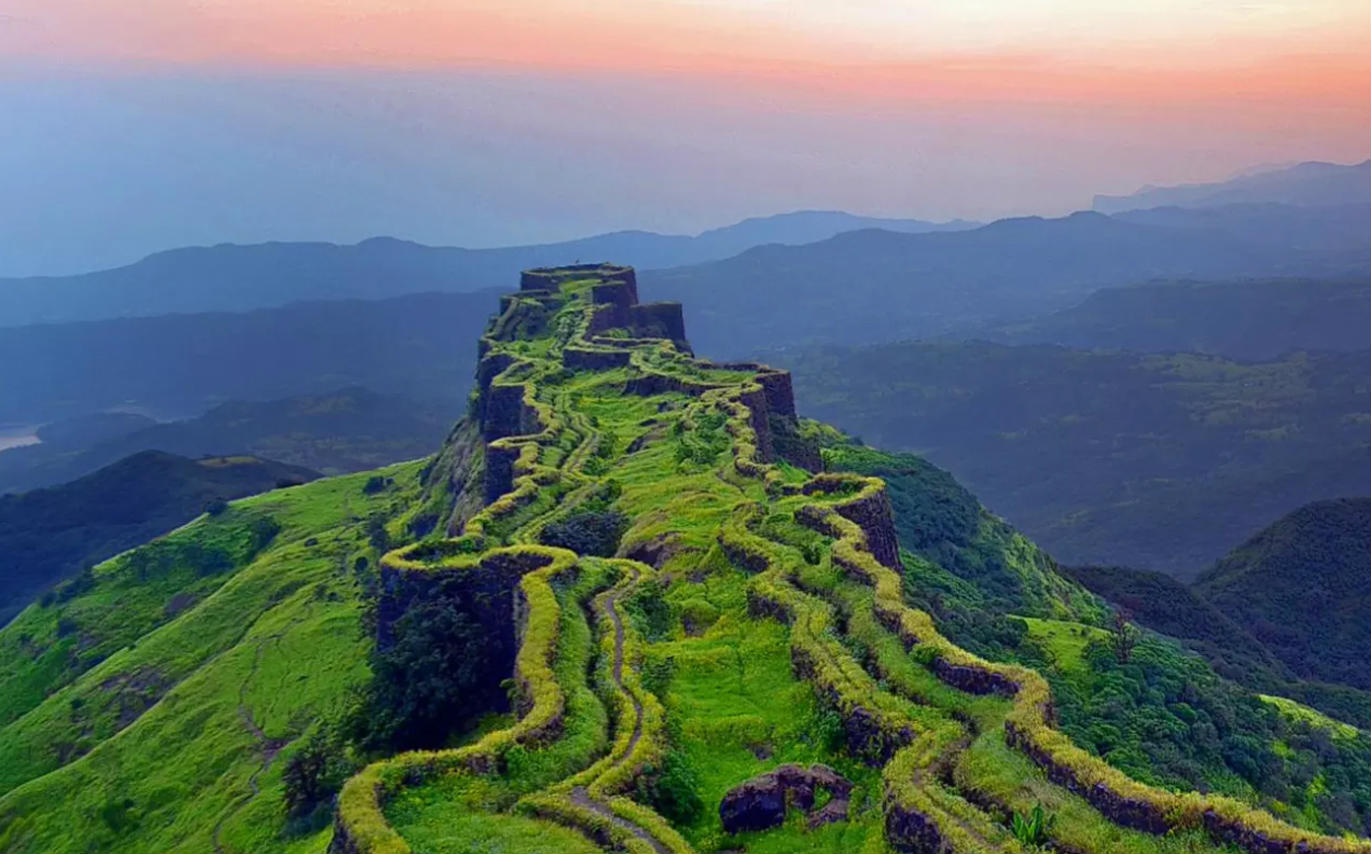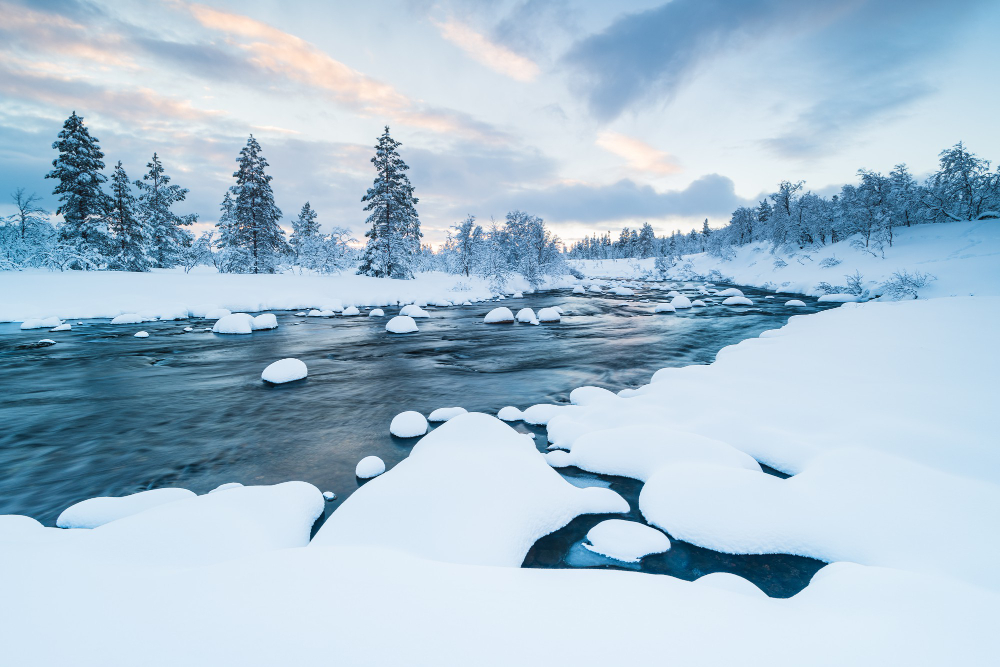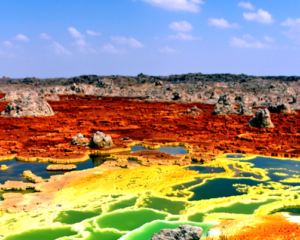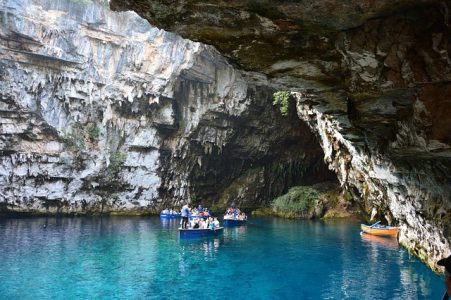 Pin
Pin Kefalonia’s Melissani Cave / Image by Katarzyna Myszukiewicz from Pixabay
One might argue that nature, in her most playful mood, has nowhere demonstrated greater wit than in the creation of island caves. While lesser mortals concern themselves with what lies above ground—the palm trees, the beaches, the predictable sunsets—the truly discerning traveler knows that the real drama unfolds in the shadows below. These subterranean spaces possess a certain theatrical quality, as if the Earth herself decided to become an interior decorator with rather extravagant tastes.
The finest examples of best islands with caves valley scattered across our blue planet offer something far more intriguing than your typical seaside holiday. They are nature’s own drawing rooms, complete with crystalline chandeliers that took millennia to hang and walls that shimmer with light borrowed from the sun. To visit these places is to understand that beauty need not always announce itself loudly. Sometimes the most enchanting experiences wait quietly in the dark, lit only by the peculiar azure glow of water catching light in ways that seem almost indecent in their perfection.
Table of Contents
1. Capri's Blue Grotto
 Pin
Pin Capri’s Blue Grotto / Image by Waitalians
The island of Capri has long understood the value of a good entrance, and the Blue Grotto makes quite the introduction. This sea cave, known locally as Grotta Azzurra, performs a daily light show that would make any stage designer weep with envy. The secret lies in a peculiar architectural arrangement: sunlight sneaks through an underwater opening and, rather than behaving sensibly, decides to transform the entire cavern into a luminous blue chamber. The water glows with such intensity that visitors often forget to breathe for a moment, caught between disbelief and wonder.
Getting inside requires a certain commitment to the experience. You must lie flat in a small rowboat while a capable boatman navigates the impossibly low entrance, a maneuver that adds just enough drama to make the reveal worthwhile. Once inside, the silence wraps around you like velvet, broken only by the gentle lap of water against ancient stone. The Romans knew about this place, of course—they were never ones to miss a good spectacle. Today’s visitors find the same ethereal beauty that captivated emperors, proof that some pleasures remain delightfully unchanged despite the passage of centuries and the march of tourism.
2. Zakynthos
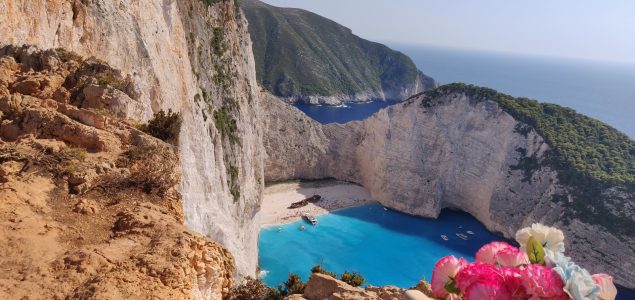 Pin
Pin Zakynthos / Photo by Elien Knockaert on Unsplash
The Greeks have always possessed an admirable talent for drama, and the Blue Caves of Zakynthos demonstrate this trait beautifully. Carved into the cliffs near Cape Skinari, these natural formations create a color so vivid that even the most jaded traveler finds themselves reaching for inadequate adjectives. The water here doesn’t simply reflect blue—it becomes blue, glowing from within as if someone had dissolved liquid sapphires into the Ionian Sea. The effect is entirely natural, caused by the way sunlight refracts through the mineral-rich water and bounces off the white limestone walls, though it feels decidedly supernatural.
What makes these caves particularly charming is their accessibility by small boat, allowing visitors to drift through arched openings and into chambers where the water seems to hold its own light source. The locals have known about these treasures for generations, but they’ve maintained a refreshing lack of pretension about the whole affair. You won’t find elaborate tourist infrastructures here—just honest boats, clear water, and rock formations that have been perfecting their craft for thousands of years. The caves change personality throughout the day as the sun moves across the sky, proving that nature understands the importance of good lighting far better than most photographers ever will.
3. Kefalonia's Melissani Cave
 Pin
Pin Kefalonia’s Melissani Cave / Image by Greecing
Kefalonia offers something rather unusual in the cave department: a cavern that experienced a dramatic collapse thousands of years ago and somehow emerged more beautiful for it. Melissani Cave now exists as a half-open chamber where a subterranean lake catches the midday sun through the gaping hole in its ceiling. The result is a light show that changes by the hour, transforming the turquoise water from mysterious darkness in the morning to an almost blinding clarity when the sun stands directly overhead.
Ancient Greeks believed this was a sanctuary of the nymphs, and one can hardly blame them for attributing divine presence to such an extraordinary place. The lake itself holds secrets beyond its striking appearance. Fed by underground channels that scientists are still mapping, the water maintains a curious mix of fresh and salt, creating layers of different densities that add to the optical illusions playing across its surface. Visitors glide across in small boats, rowed by guides who have perfected the art of staying silent at precisely the right moments. The walls rise around you in shades of orange and gray, draped with vegetation where the collapsed roof allows enough light for plants to thrive. It’s geology and botany conspiring together to create something that feels less like a cave and more like nature’s own private chapel, complete with a skylight that would cost a fortune to install anywhere else.
4. Palawan's Underground River
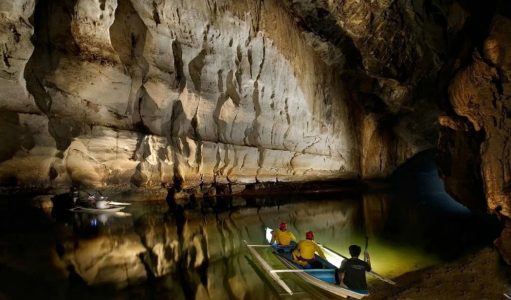 Pin
Pin Palawan’s Underground River / Image by palawandays
The Philippines understood the assignment when it came to creating dramatic cave systems, and Palawan’s Puerto Princesa Subterranean River demonstrates this admirably. This isn’t merely a cave with some water trickling through—it’s an entire navigable underground river stretching over eight kilometers through a limestone karst mountain landscape. UNESCO recognized its exceptional value by granting World Heritage status, though honestly, the cave itself seems rather indifferent to human accolades. It simply continues doing what it has done for millennia: carving elaborate passages through rock while hosting an ecosystem that thrives in perpetual darkness.
What sets this cave apart is the sheer scale of the operation. You board a small paddle boat and journey into chambers so vast that your headlamp barely reaches the ceiling. Stalactites hang like ancient icicles, some as thick as tree trunks, while the river flows with surprising gentleness considering the monumental work it has accomplished. Bats rustle overhead in numbers that would alarm anyone with a nervous disposition, though they’re harmless enough and serve as the cave’s cleanup crew. The air smells of minerals and damp earth, a scent that somehow feels appropriate for a place where daylight has never reached. Above ground, tropical jungle blankets the mountain, but down here, time moves differently, measured in the slow drip of water adding microscopic layers to already impressive rock formations.
5. Grand Cayman's Crystal Caves
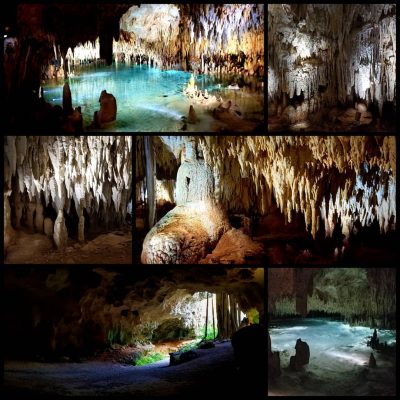 Pin
Pin Grand Cayman’s Crystal Caves / Image by Jay Poonkasem
Grand Cayman decided to keep its most impressive secrets inland, tucked away beneath a lush tropical forest where most visitors never think to look. The Crystal Caves reveal themselves gradually as you descend wooden walkways into chambers decorated with formations that justify their glittering name. Stalactites and stalagmites have been growing here at the leisurely pace of one cubic centimeter per century, creating structures that range from delicate soda straws to massive columns that connect floor to ceiling.
The caves remained hidden from the world until remarkably recently, discovered only in the last few decades when two curious dog owners followed their pets into an opening in the limestone.
The temperature drops noticeably as you enter, providing welcome relief from the Caribbean heat while adding to the sense that you’ve stepped into another realm entirely. Clear pools of water collect in various chambers, so still they mirror the formations above with perfect accuracy, doubling the visual feast. The lighting has been installed with surprising restraint, illuminating the natural beauty without turning the place into a garish tourist trap. What makes these caves particularly endearing is their human scale—you’re not overwhelmed by impossible vastness, but rather invited into intimate spaces where you can appreciate the intricate details of each formation. The forest above remains blissfully unaware of the crystalline palace beneath its roots, continuing to drop leaves and send down moisture that feeds the eternal construction project below.
6. Barbados and Harrison's Cave
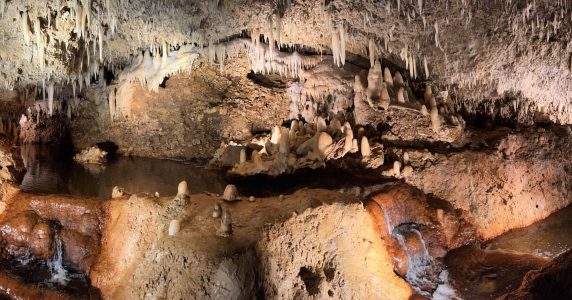 Pin
Pin Barbados and Harrison’s Cave / Image by Nathan Goodlet
Barbados approached the cave experience with characteristic Caribbean style, installing a tram system that allows visitors to explore Harrison’s Cave without sacrificing comfort or accessibility. This crystalline limestone cavern system stretches through the island’s interior like an elaborate underground mansion, complete with flowing streams, deep pools, and towering columns that demonstrate what happens when calcium carbonate has several million years to express itself creatively. The tram glides quietly through passages tall enough to accommodate cathedral ceilings, stopping at strategic points where the formations deserve prolonged admiration and the inevitable photographs that never quite capture the three-dimensional reality.
The island offers a second act in the form of Animal Flower Cave, a sea cave perched on the northern coast where the Atlantic Ocean crashes through natural openings with theatrical violence. The cave takes its name from the sea anemones that bloom in the tidal pools, delicate creatures that seem absurdly fragile given their hostile surroundings. During calm weather, visitors can swim in these pools while waves surge through the cave openings, creating a rather exhilarating combination of natural jacuzzi and adventure sport. The contrast between Harrison’s serene underground rivers and Animal Flower’s aggressive seascape shows that Barbados understood the value of variety. Some days call for gentle contemplation of geological art, while others demand the thrill of standing where land battles endlessly with ocean, neither side willing to concede defeat.
7. Sardinia's Neptune's Grotto
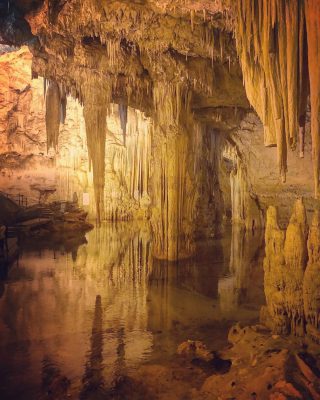 Pin
Pin Sardinia’s Neptune’s Grotto / Image by Lilya
Sardinia’s Neptune’s Grotto near Alghero presents itself with the kind of grandiosity that suggests the sea god himself might have had design input. This massive cave complex carved into coastal cliffs has been attracting visitors since the 18th century, though it has been perfecting its interior decorating for roughly two million years. The entrance can be reached by boat or, for those with a taste for dramatic arrivals, via the Escala del Cabirol—a stairway of 654 steps carved into the cliff face that descends with the kind of theatrical flair Italians excel at creating.
The descent offers spectacular views of the Mediterranean, though most visitors find themselves too focused on not missing a step to fully appreciate the scenery.
Inside, the grotto reveals why it earned its mythological name. A large saltwater lake stretches nearly 120 meters, its surface so calm it creates perfect mirror images of the formations above. The stalactites here have grown to extraordinary lengths, some reaching down like frozen waterfalls of stone. One particularly impressive column spans 40 meters from floor to ceiling, a feat of natural engineering that required millennia of patient mineral deposits. The lighting casts dramatic shadows that shift as you move through the chambers, emphasizing the cathedral-like quality of the space. Sardinia might be known for its beaches and ancient ruins, but Neptune’s Grotto reminds visitors that some of the island’s most impressive architecture was created entirely without human intervention, using only water, time, and the slow chemistry of dissolving limestone.
8. Jamaica's Green Grotto Caves
 Pin
Pin Jamaica’s Green Grotto Caves / Image by Cole Rise
Jamaica’s Green Grotto Caves carry stories that stretch far beyond their geological significance, having served as shelter, hideout, and sanctuary for various groups throughout the island’s complex history. The Taino people, Jamaica’s original inhabitants, knew these caves intimately and left behind traces of their presence in the form of petroglyphs and artifacts. Later, Spanish settlers fleeing British invasion used the labyrinthine passages as refuge, followed by runaway enslaved people seeking freedom in the 18th century.
Even smugglers found the caves useful during Prohibition, storing rum in the cool darkness before shipping it to thirsty Americans. The limestone walls absorbed all these human dramas while continuing their own slow transformation, indifferent to the urgencies of surface life.
The cave system extends over 1,500 meters, weaving through rock formations that gleam with moisture and mineral deposits. Deep within lies the Grotto Lake, a subterranean body of water that maintains an eerie stillness despite being fed by underground streams. The formations here lack the pristine perfection of some show caves, bearing instead the weathered character of a place that has witnessed genuine history rather than simply existing as a natural monument. Ferns and moss colonize areas near the entrance where enough light penetrates, creating pockets of green that give the caves their name. Walking through these passages feels less like touring a geological attraction and more like moving through chapters of a book written in stone, where each chamber holds memories of people who found sanctuary, safety, or simply a cool respite from the tropical heat above.
9. Easter Island's Volcanic Caves
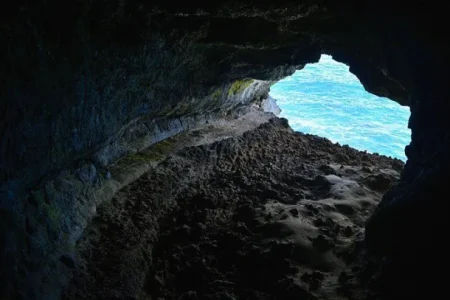 Pin
Pin Easter Island’s Volcanic Caves / Image by Rapa Nui
Easter Island presents itself to the world through its enigmatic moai statues, those massive stone figures that stare eternally across the Pacific. Yet beneath this volcanic landscape lies another world entirely, one carved not by human hands but by molten rock that flowed through tubes millions of years ago. Ana Kakenga, known poetically as the cave of two windows, opens onto the ocean through twin apertures that frame the waves with geometric precision. Standing inside this lava tube and looking out through these natural windows creates a perspective that feels deliberately composed, as though the island itself wanted to offer its inhabitants a particular view of the endless sea that both protected and isolated them.
The volcanic caves of Rapa Nui served practical purposes for the island’s Polynesian settlers, providing shelter from the elements and cool storage for food in a place where trees had become scarce. These lava tubes form when the outer layer of a lava flow cools and hardens while molten rock continues flowing beneath, eventually draining away and leaving hollow passages. The walls retain the rippled texture of flowing lava, frozen mid-motion thousands of years ago. Unlike the limestone caves found elsewhere, these volcanic formations lack stalactites and colorful mineral deposits. Instead, they offer raw geological honesty—dark basalt corridors that smell of ancient fire and sea salt, reminding visitors that this remote island was born from underwater volcanic eruptions and continues to bear the marks of its violent creation.
10. Staffa's Fingal's Cave
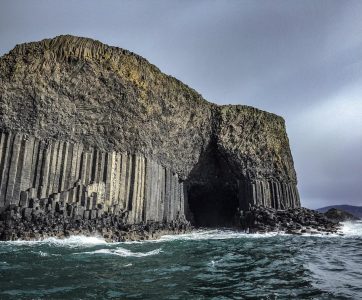 Pin
Pin Staffa’s Fingal’s Cave / Image by My Insta Scotland
Scotland’s Inner Hebrides harbor a small uninhabited island called Staffa, which might have remained obscure were it not for one extraordinary sea cave that has inspired composers, poets, and painters for centuries. Fingal’s Cave presents itself like a natural cathedral constructed from hexagonal basalt columns that rise from the sea with such geometric precision they appear almost manufactured. These columns formed roughly 60 million years ago when volcanic lava cooled at just the right speed to crack into six-sided pillars, stacking themselves with the orderliness of a honeycomb. The effect is simultaneously mathematical and deeply romantic, appealing to those who appreciate both geological precision and wild beauty.
The cave extends 75 meters into the island, and the sea surges through it with a rhythm that creates haunting acoustics. Felix Mendelssohn visited in 1829 and found himself so moved by the experience that he composed his Hebrides Overture, attempting to capture in music the sound of waves echoing off those ancient columns. The cave’s Gaelic name, An Uamh Binn, translates as “the melodious cave,” suggesting that Mendelssohn wasn’t the first to notice its acoustic properties. Visiting requires navigating choppy waters and scrambling across slippery basalt, but those who make the journey find themselves standing in a space where geology achieved something approaching art. The columns frame the cave mouth like organ pipes in some vast instrument, and the sea provides the constant music, playing variations on a theme it has been perfecting since long before humans arrived to listen and wonder.
Planning Your Cave Adventure
Visiting island caves requires a certain flexibility of spirit that standard travel planning often overlooks. Weather determines everything, particularly with sea caves where a calm morning can transform into impassable swells by afternoon. The Blue Grotto in Capri famously closes more often than it opens, turning away hopeful visitors when waves or winds make entry unsafe. This unpredictability shouldn’t discourage you—it simply means building extra days into your itinerary and maintaining the philosophical attitude that nature owes you nothing. The caves have existed for millennia without human audiences, and they’ll continue their slow evolution whether or not you manage to see them on your scheduled Tuesday afternoon.
Physical considerations matter more than most travel websites admit. Getting into Melissani Cave involves navigating stairs, while Fingal’s Cave demands sure footing on wet basalt that becomes treacherously slippery. Some caves maintain year-round cool temperatures that feel delightful after tropical heat but require a light jacket for extended visits. Photography presents its own challenges, as most caves exist in lighting conditions that confuse even expensive cameras. The human eye adapts beautifully to the dimness and captures the magical blue glow of water-filled grottoes, but your camera will likely disappoint you later. Accept this limitation early, take a few photos for memory’s sake, then put the device away and simply exist in these extraordinary spaces. The caves reward presence and attention far more generously than they reward documentation. Sometimes the best souvenirs are the ones you carry only in memory, unmediated by screens or lenses.
FAQs
Most island caves stay open all year, but sea caves like Capri’s Blue Grotto close during rough weather. Summer offers calmer seas, though you’ll share the experience with more visitors.
Not usually. Most caves offer boat tours or walkways. Swimming is optional at places like Barbados’ Animal Flower Cave, where pools are contained and relatively safe during calm conditions.
It depends on the cave. Harrison’s Cave in Barbados has tram access, making it very accessible. Others like Fingal’s Cave require climbing on slippery rocks and aren’t suitable for everyone.
Plan two to four hours including travel time. Some caves like Puerto Princesa’s underground river need half a day. Always build in buffer time for weather delays or longer-than-expected queues.
Book ahead whenever possible, especially during peak season. Popular caves like the Blue Grotto have limited daily capacity, and arriving without reservations often means disappointment.










